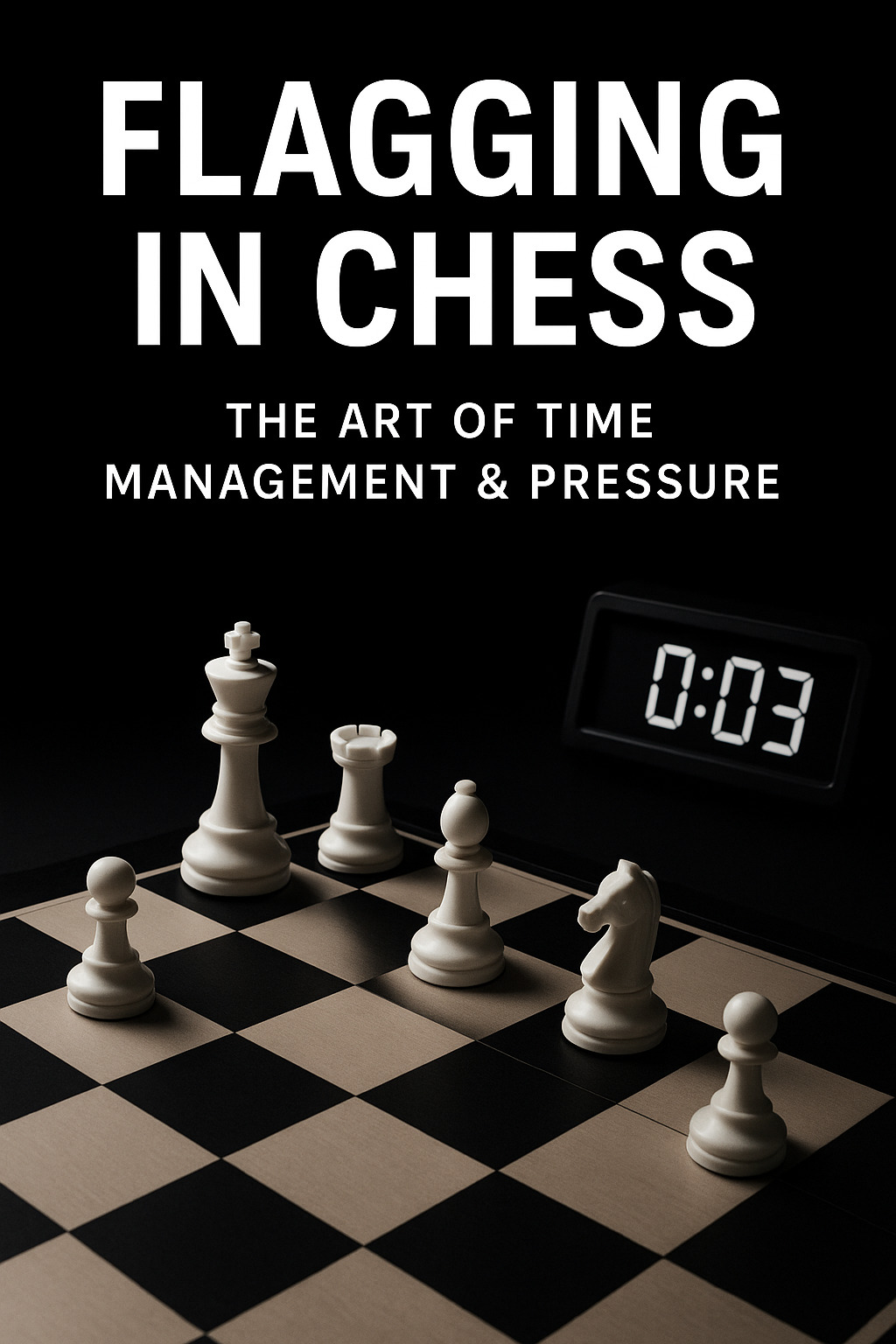Flagging in Chess: The Art of Time Management and Pressure

Flagging in Chess: The Art of Time Management and Pressure
Flagging is one of the most dramatic and psychologically intense aspects of fast chess. This guide explores the art of flagging, time management strategies, and the mental game of chess under pressure.
What is Flagging in Chess?
Flagging occurs when a player runs out of time, causing them to lose the game regardless of their position. In fast time controls, flagging becomes a legitimate strategy and a constant threat.
The Psychology of Flagging
Mental Pressure
- Time Anxiety: Fear of running out of time
- Decision Paralysis: Overthinking under pressure
- Adrenaline Rush: Heightened awareness and stress
Psychological Advantages
- Opponent Distraction: Forcing time pressure on opponent
- Momentum Shifts: Changing game dynamics
- Confidence Building: Success under pressure
When to Flag (Sacrifice for Time)
Good Flagging Scenarios
- Material Advantage: When ahead in material
- Time Advantage: When opponent has less time
- Positional Strength: When position is clearly better
- Endgame Mastery: In favorable endgames
Bad Flagging Scenarios
- Material Disadvantage: When behind in material
- Time Disadvantage: When opponent has more time
- Positional Weakness: When position is worse
- Complex Endgames: In difficult theoretical positions
Time Management Strategies
Opening Phase (10-15% of time)
- Memorized Lines: Use known opening theory
- Quick Development: Focus on piece development
- Avoid Deep Calculation: Save time for later
Middlegame Phase (60-70% of time)
- Tactical Awareness: Look for immediate threats
- Strategic Planning: Develop long-term plans
- Time Allocation: Balance calculation with intuition
Endgame Phase (15-30% of time)
- Pattern Recognition: Use known endgame patterns
- King Activity: Activate king early
- Pawn Structure: Understand pawn endgames
Flagging Techniques
1. Pre-move Strategy
- Anticipate Moves: Think ahead during opponent's turn
- Common Responses: Prepare for likely moves
- Time Saving: Reduce thinking time per move
2. Positional Sacrifices
- Material for Time: Sacrifice pieces for time advantage
- Simplification: Trade pieces to reduce complexity
- Endgame Transition: Force favorable endgames
3. Psychological Pressure
- Quick Moves: Play fast to pressure opponent
- Confident Play: Show confidence in your position
- Time Awareness: Make opponent aware of time pressure
Avoiding Being Flagged
Time Management Rules
- Never use more than 20% of time in opening
- Save time for endgame calculations
- Use intuition when time is short
- Practice with shorter time controls
Mental Preparation
- Stay Calm: Don't panic under time pressure
- Trust Intuition: Rely on pattern recognition
- Focus: Maintain concentration despite pressure
- Confidence: Believe in your abilities
Training for Flagging Situations
Daily Practice
- Blitz Games: Play 5+0 and 3+0 games
- Time Pressure: Practice with very short time
- Flagging Scenarios: Study flagging positions
- Mental Training: Practice under pressure
Specific Drills
- Speed Chess: Play with 1+0 time control
- Flagging Practice: Practice flagging techniques
- Time Management: Track time usage per phase
- Pressure Training: Play in tournaments
Famous Flagging Examples
Magnus Carlsen
- Known for flagging in bullet chess
- Excellent time management
- Psychological pressure tactics
Hikaru Nakamura
- Master of flagging in blitz
- Quick decision making
- Endgame flagging expertise
Common Flagging Mistakes
- Flagging too early: Not waiting for right moment
- Over-calculating: Spending too much time on moves
- Panic moves: Making mistakes under pressure
- Poor time management: Not allocating time properly
Advanced Flagging Strategies
Endgame Flagging
- King Activity: Activate king quickly
- Pawn Pushes: Advance pawns with tempo
- Opposition: Use king opposition
- Zugzwang: Force opponent into difficult positions
Psychological Tactics
- Confidence: Show confidence in your position
- Speed: Play quickly to pressure opponent
- Body Language: Use physical presence
- Verbal Cues: Subtle psychological pressure
Conclusion
Flagging is an art that combines tactical skill, time management, and psychological warfare. Master the techniques, practice under pressure, and learn to use flagging as a legitimate strategic weapon.
Remember: Flagging is not about luck—it's about skill, preparation, and mental toughness. Practice regularly and develop your flagging abilities to become a complete chess player.
Master Flagging in Practice
Understanding flagging theory is just the beginning. To truly master these techniques, you need hands-on practice under real pressure. Our Chess Speed Trainer offers the perfect environment to develop your flagging skills:
- Real-time flagging practice with various time controls
- Pressure simulation to build mental toughness
- Flagging scenarios that test your decision-making
- Performance analytics to track your improvement
Transform your flagging knowledge into practical skills. Start practicing today!
Ready to Practice?
Put your knowledge to the test with our Chess Speed Trainer. Practice the exact techniques described in this article with real-time feedback and progress tracking.
Start Training NowChess Speed Team
Chess training expert and content creator